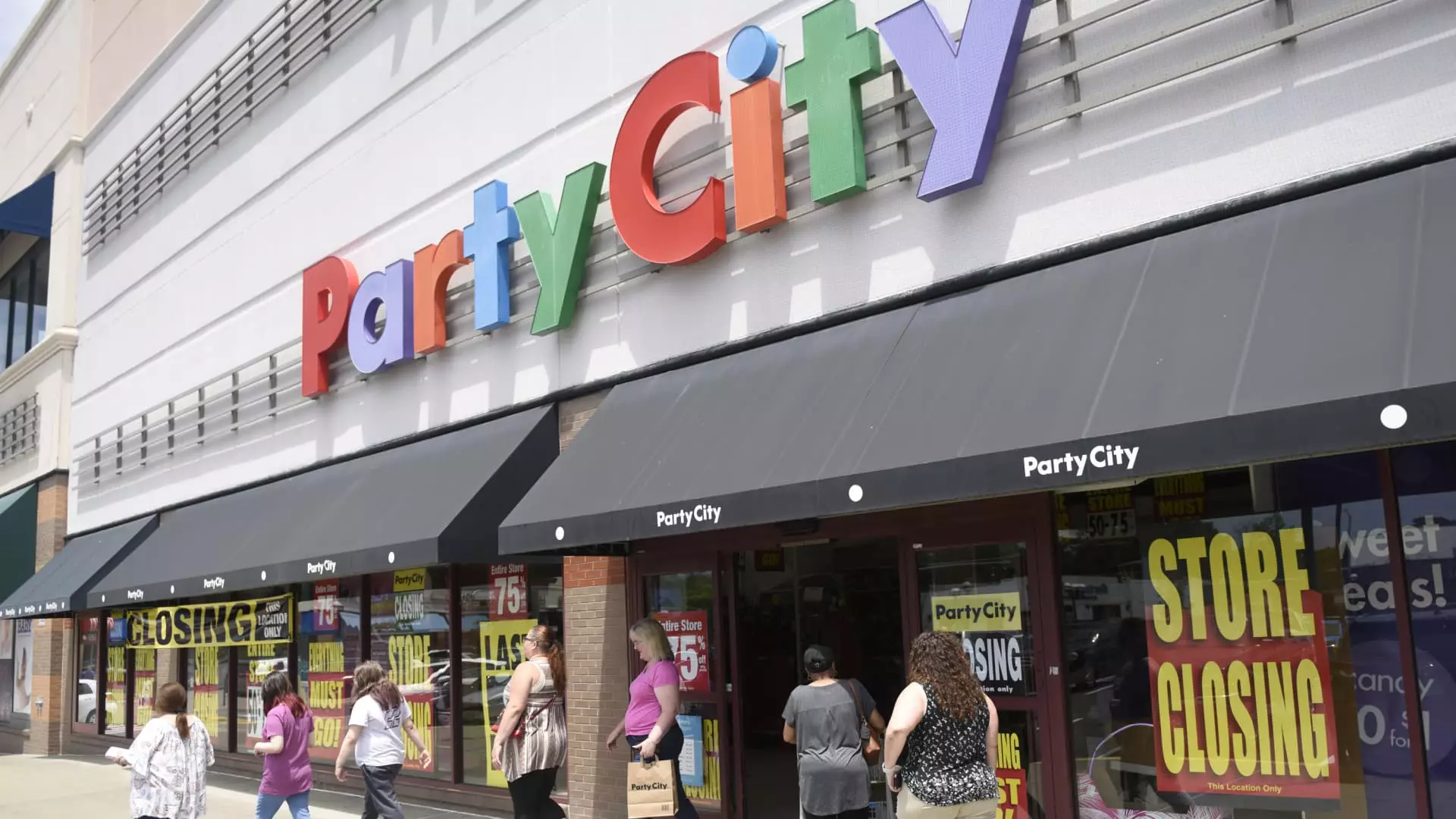The landscape of retail in the United States has been undergoing a dramatic transformation, especially in the wake of the pandemic. The latest analysis by Coresight Research highlights a troubling trend: the number of store closures reached staggering heights in 2024, echoing a period only rivaled by the early months of COVID-19. This article will delve into the factors contributing to the ongoing decline of brick-and-mortar stores, the socio-economic shifts influencing consumer spending, and how these changes may redefine the future of retail.
Recent findings show that over 7,325 stores closed their doors in the United States in 2024, marking the most significant wave of closures since the onset of the pandemic in 2020. Notably, heavyweights such as Party City and Macy’s were among those leading the charge in shuttering locations. The year 2025 is on track to exacerbate these departures, with projections estimating that nearly 15,000 stores could close by year-end.
Prominent retailers like Walgreens Boots Alliance and 7-Eleven have also contributed to this unsettling trend. As of early January 2025, an additional 1,925 closures had already been announced, illuminating a bleak outlook for retail chains that cannot adapt to the evolving market dynamics. The disparity between retail giants that thrive—Amazon, Costco, and Walmart—and the smaller chains facing turmoil underscores a critical industry divide.
The stark reality of today’s retail market is underscored by a significant increase in bankruptcies; 2024 saw 51 retail bankruptcies—an increase from 25 in the previous year. These closures are often the result of individual chains, such as Joann and The Container Store, struggling to navigate a practical business model amidst financial strains.
Interestingly, this tumultuous environment is not solely a reflection of a downturn in demand. Instead, the fact that some companies are exhibiting substantial growth indicates that the challenges they face stem from competitive pressures. John Mercer from Coresight Research noted that while consumer spending remains robust, it is increasingly directed toward a select few retailers who offer compelling value propositions.
A noticeable shift is occurring in shopping habits, where consumers are increasingly drawn to brands that provide better pricing, convenience, and e-commerce capabilities. This shift has left traditional retailers scrambling to adapt. For instance, Macy’s is in the process of closing 150 of its flagship stores and pivoting to smaller, high-performing concepts to reach consumers more effectively.
The fallout from these closures is evident not only among large department stores but also among specialty retailers. Chains like Big Lots and Family Dollar have felt the weight of combined internal issues and external competition from e-commerce platforms. The emergence of companies like Shein and Temu has disrupted the retail environment even further, attracting customers with lower prices and home delivery.
Store closures are not simply a matter of retailers vanishing from the scene; they signify profound changes in the traditional retail structure. As certain big retailers shutter locations, smaller vendors often follow suit. This butterfly effect jeopardizes not only the economic viability of strip malls and shopping centers but also alters community levels of interaction.
Moreover, many of these vacant retail spaces are being repurposed for non-retail uses such as fitness centers, medical clinics, and apartments, illustrating a critical shift in consumer lifestyle and preferences. David Silverman from Fitch Ratings remarked that companies across sectors are reconsidering their retail footprints in light of these changes, a sign that the dynamics of retail real estate are also evolving.
Despite the sobering statistics about store closures, there are glimmers of hope for the retail industry. According to Coresight, the U.S. witnessed its highest number of store openings last year, totaling 5,970—an increase indicating a sector that is still actively seeking opportunities for growth. Retailers like Aldi and Barnes & Noble are among those spearheading these openings, emphasizing the balance between closures and potential new ventures.
Looking ahead, analysts anticipate that while store closures will continue to outpace new openings, there remains a chance for retailers to innovate and adapt. The fluctuation of consumer preferences and the relentless march of technology demand that retailers prioritize agility and resilience to thrive in this ever-changing environment.
As retailers navigate the complex landscape shaped by closure trends, shifting consumer preferences, and evolving economic conditions, they must remain vigilant in adapting to new realities. The magnitude of store closures witnessed in recent years serves as both a cautionary tale and a prompt for transformation—a clear indicator that resilience and innovation are paramount for survival in today’s retail climate. The future may be unpredictable, but it is certain that the retail industry will continue to evolve, driven by the demands of modern consumers.

